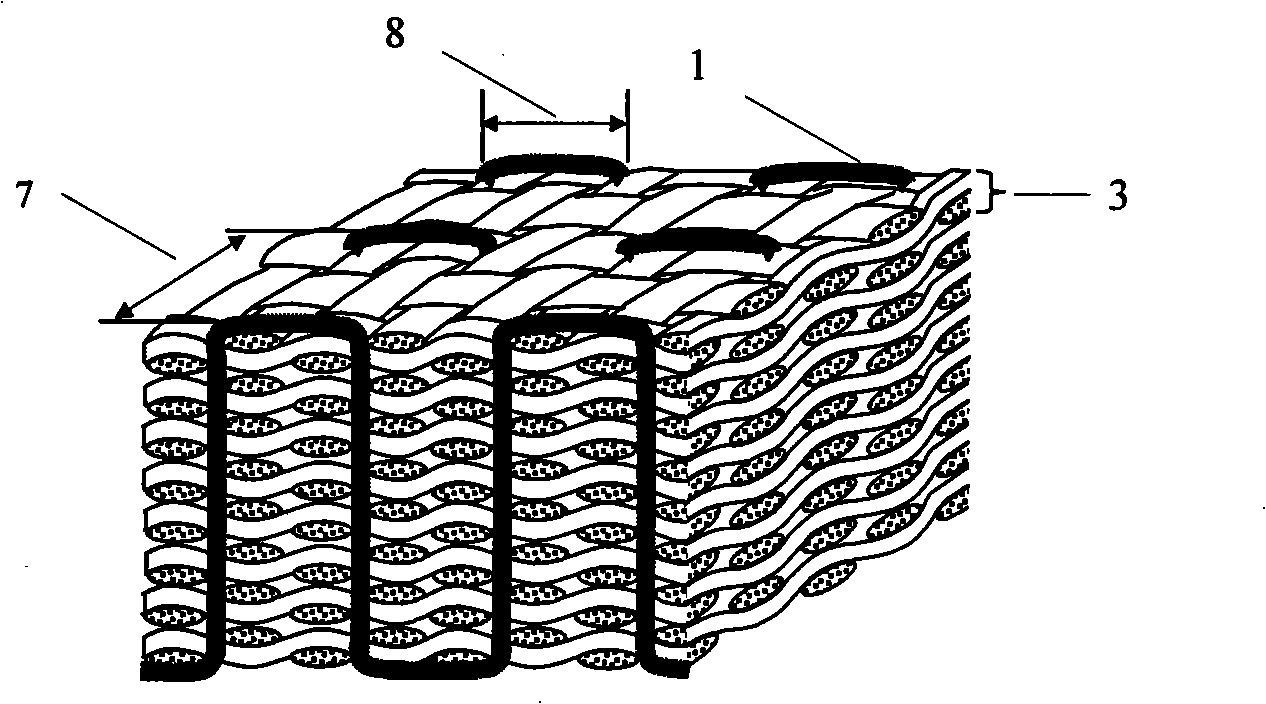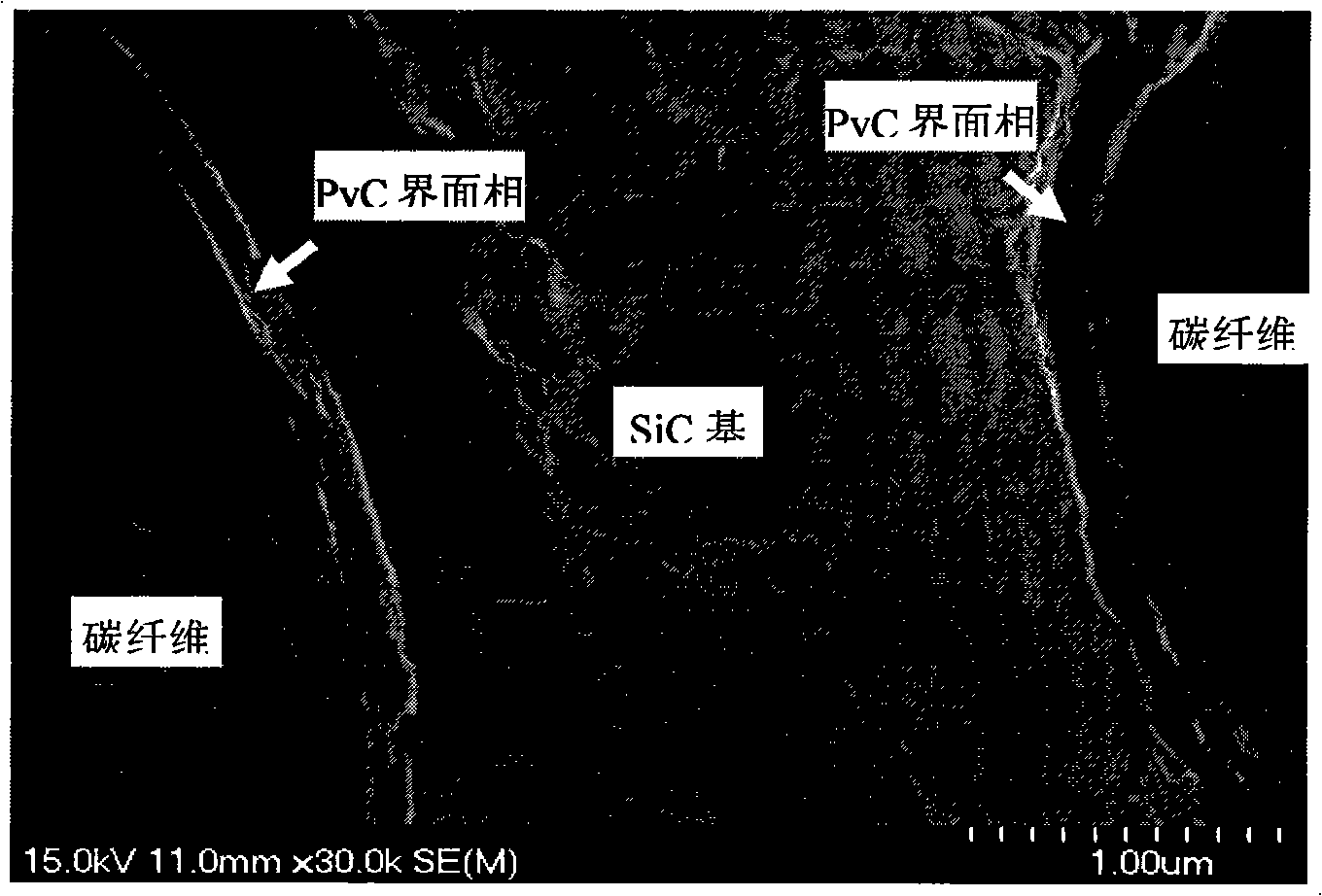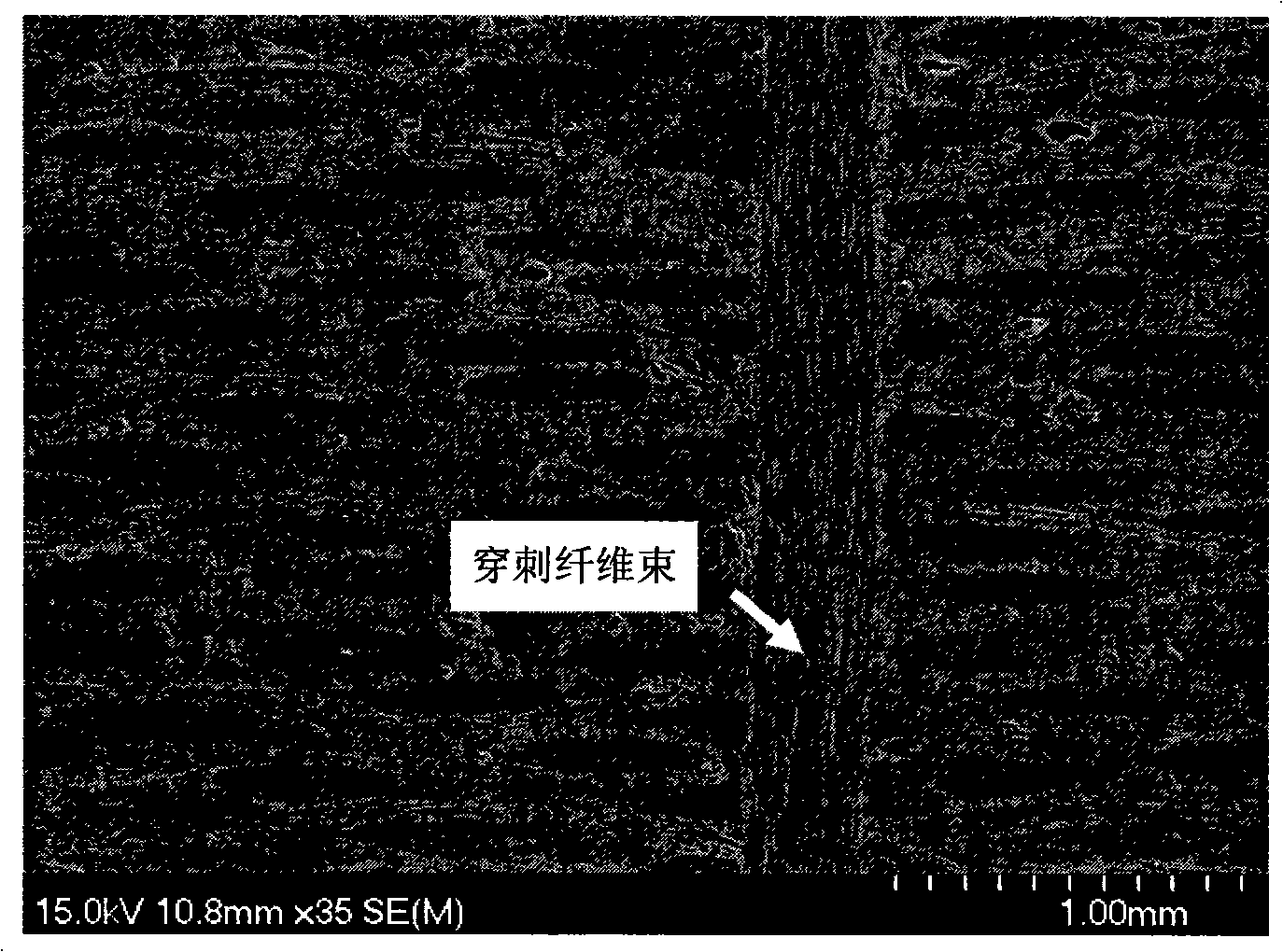Process for preparing carbon/silicon carbide composite material
A composite material, silicon carbide technology, applied in the field of composite material preparation, can solve problems such as poor shear resistance between layers
- Summary
- Abstract
- Description
- Claims
- Application Information
AI Technical Summary
Problems solved by technology
Method used
Image
Examples
Embodiment 1
[0016] Example 1: Preparation of a C / SiC composite material with a puncture spacing of 2 mm and an interface phase thickness of 0.16 μm.
[0017] Select T300-1K carbon fiber with a diameter of 7 μm in carbon fiber 1, weave it into plain weave 3, superimpose 30 layers, and sew the laminated layers together by puncture suture method to obtain a puncture distance 7 and a puncture step length 8 of 2 mm, and a volume density of 0.70g / cm 3 1. A carbon fiber prefabricated body with a carbon fiber volume fraction of 40.0%.
[0018] The carbon fiber prefabricated body was clamped with a graphite clamp, and placed in a vacuum furnace for degumming and pretreatment at 1800 ° C for 3 h.
[0019] The resulting fiber preforms were deposited with PyC using CVI. The preparation of the PyC interfacial phase uses propylene as the source gas, Ar as the diluent gas, and H 2 It is the carrier gas, the deposition temperature is 900°C, and the total system pressure is 5KPa. Get a density of 0.80...
Embodiment 2
[0023] Example 2: Preparation of a C / SiC composite material with a puncture spacing of 4 mm and an interface phase thickness of 0.2 μm.
[0024] Select T300-1K carbon fiber with a diameter of 7 μm in carbon fiber 1, weave it into plain weave 3, superimpose 40 layers, and sew the stacked layers together by puncture suture method, and obtain the puncture distance 7 and puncture step length 8, both of which are 4mm, and the volume density is 0.73g / cm 3 , A carbon fiber preform with a carbon fiber volume fraction of 41.7%.
[0025] The carbon fiber prefabricated body was clamped with a graphite clamp, and placed in a vacuum furnace for degumming and pretreatment at 1900°C for 2.5 hours.
[0026] The resulting fiber preforms were deposited with PyC using CVI. The preparation of the PyC interfacial phase uses propylene as the source gas, Ar as the diluent gas, and H 2 It is the carrier gas, the deposition temperature is 950°C, and the total system pressure is 5KPa. The obtained ...
Embodiment 3
[0031] Example 3: Preparation of a C / SiC composite material with a puncture distance of 6 mm and an interface phase thickness of 0.2 μm.
[0032] Select T300-1K carbon fiber with a diameter of 7 μm in carbon fiber 1, weave it into plain weave 3, superimpose 55 layers, and sew the laminated layers together by puncture suture method, and obtain the puncture distance 7 and puncture step length 8 of 6 mm, and the volume density is 0.71g / cm 3 , A carbon fiber prefabricated body with a carbon fiber volume fraction of 40.3%.
[0033] The carbon fiber prefabricated body was clamped with a graphite clamp, and placed in a vacuum furnace at 2100°C for 2 hours of degumming and pretreatment.
[0034] The resulting fiber preforms were deposited with PyC using CVI. The preparation of the PyC interfacial phase uses propylene as the source gas, Ar as the diluent gas, and H 2 It is the carrier gas, the deposition temperature is 1000°C, and the total system pressure is 7KPa. The resulting de...
PUM
| Property | Measurement | Unit |
|---|---|---|
| Diameter | aaaaa | aaaaa |
| Bulk density | aaaaa | aaaaa |
| Density | aaaaa | aaaaa |
Abstract
Description
Claims
Application Information
 Login to View More
Login to View More - R&D
- Intellectual Property
- Life Sciences
- Materials
- Tech Scout
- Unparalleled Data Quality
- Higher Quality Content
- 60% Fewer Hallucinations
Browse by: Latest US Patents, China's latest patents, Technical Efficacy Thesaurus, Application Domain, Technology Topic, Popular Technical Reports.
© 2025 PatSnap. All rights reserved.Legal|Privacy policy|Modern Slavery Act Transparency Statement|Sitemap|About US| Contact US: help@patsnap.com



